
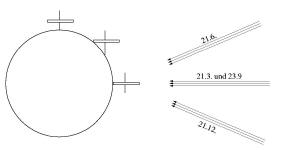
Theory
The starting point of the dial is a disc, parallel to the equator plane, with an indicator that is parallel to the earth's axis. The angle between indicator an the horizontal plane is therefore given by the geographic latitude of the place. This is the well known 'equatorial sundial'. In case of positive solar declination, i.e. in spring and summer, the sun shines on the top side of the dial. At negative solar declination, i.e. autumn and winter, the sun shines on the down side of the dial.


The shadow of the indicator moves at a constant angular speed of 360/24=15 Degrees/hour along the disc. In order to indicate the time one simply puts hour marks at a constant angular interval of 15 degrees on the edge of the dial.
This dial is universal. Moving it to another latitude one just has to change the tilt, moving it to another longitude one just has to turn the disc around the axis.
This is an aesthetic advantage over vertical dials (e.g. on house walls) or horizotal dials where the hour lines are not at constant angles and the scale is therefore different for each longitude or latitude.
Another advantage of this equatorial dial is the possibility of using the shadow to indicate noon in the different places on earth: If one places a world map in polar projection on the disk, the center of the indicator gives the longitude where it is currently noon.
The time indicated by this dial, or any dial with straight indicator and straight hour lines, deviates from the time that our watches show by up to ±16 minutes during the course of the year. The reason for that lies in the tilt of the earth's axis with respect to the ecliptic and the non uniform movement of the earth around the sun in it's elliptic orbit, which is governed by Kepler's laws. The difference between sundial time and standard time is called the 'Equation of Time'.
However, since the sun changes it's declination every day, i.e. since every day another part of the indicator casts a shadow on the perimeter of the disc, we have the possibility of shaping the indicator in a way such that the equation of time is compensated.
December 21 - June 21 June 21 - December 21

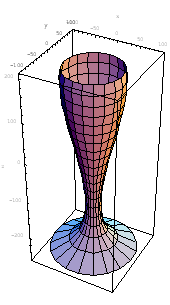
For this correction one needs two indicators, since twice a year the sun shows the same declination but the equation of time is different at these times. One has to change the indicator twice a year and therefore the realizations of this dial are usually quite small.
December 21 - June 21 June 21 - December 21
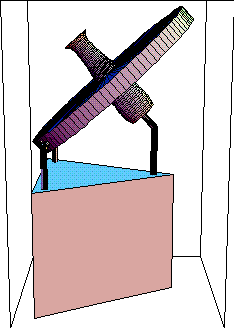
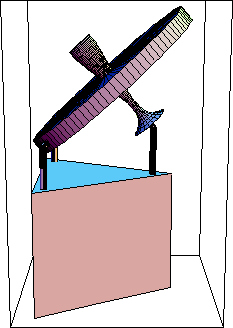
Here, the novelty of this dial comes into play. Instead of using two indicators which have to be exchanged, both indicators are put simultaneously and the thicker part is made 'semitransparent'. This produces a 'double shadow.' Which of the shadow boarders is valid for the given time can be read from a sketch on the dial. The following picture show pictures produced with AutoCad where the semi-transparency is achieved by cutting helix slits into the outer part of the indicator.
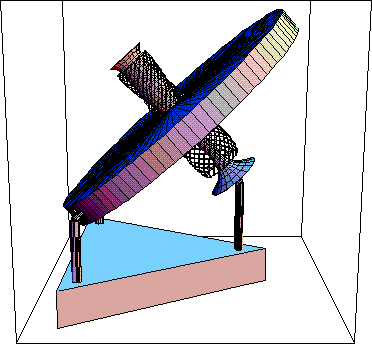
21. December 3. February
19. February 14. March
12. April 26. April
14. May 21. June
Such an uninterrupted helix slit on the outer indicator is however not mechanically stable. A stable realization of the indicators which was reasonable to produce is shown in the next pictures.
Another special feature of the dial is the accurate indication of the date. The perimeter of the disc casts a shadow on the indicator. Placing a calendar scale on the indicator one can show the actual date with high accuracy.
To have a semitransparent indicator and placing in addition an accurate calendar on it, is a bit tricky. The solution was to indicate the date by drilling holes along the diagonals, one hole for each day of the year. The holes for the first of the month are larger and the month is written next to the line of holes. Once the hole corresponding to the shadow has been found it is easy to just count the number of days from the first of the month.